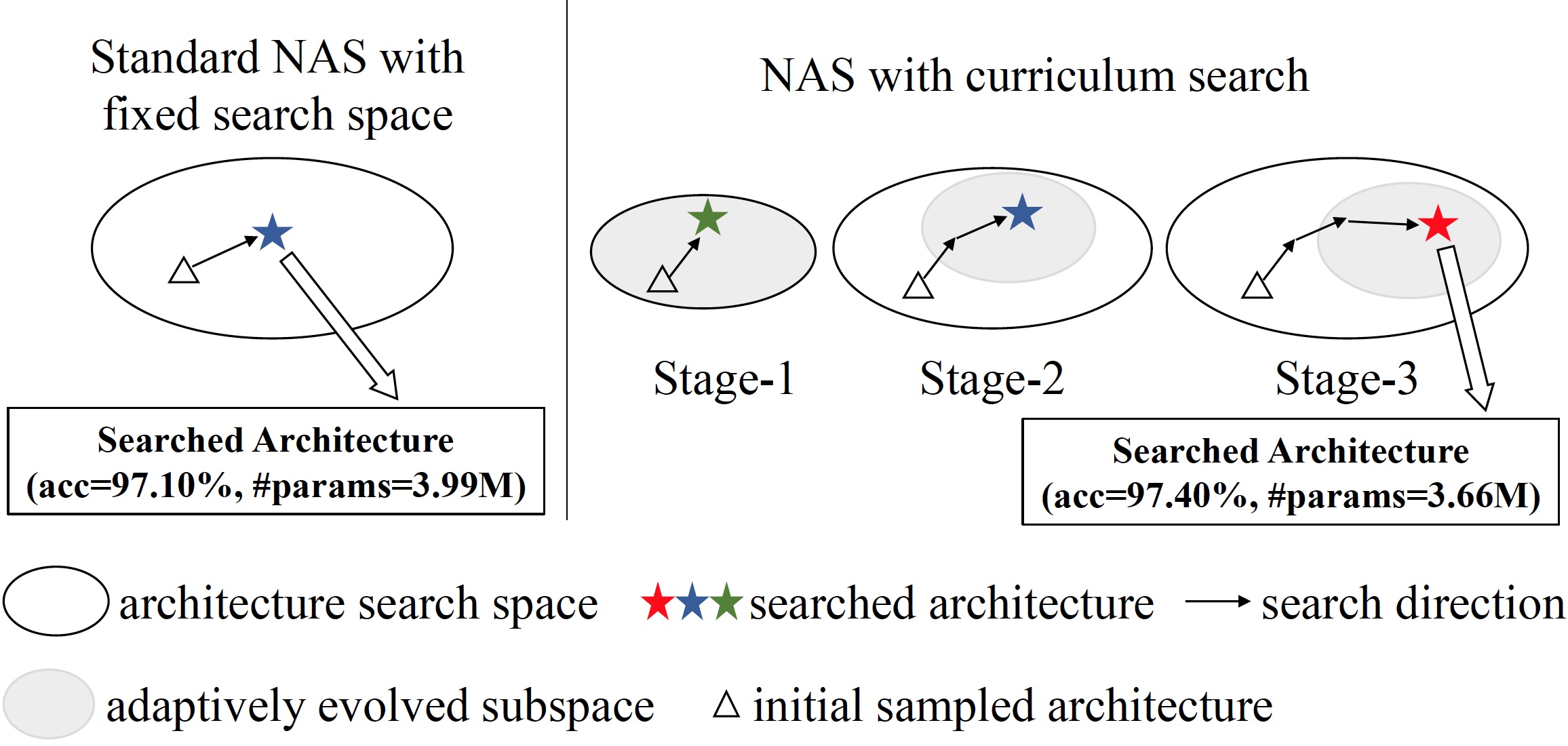[ICML 2020] Breaking the Curse of Space Explosion: Towards Effcient NAS with Curriculum Search [PDF]
Neural architecture search (NAS) has become an important approach to automatically find effective architectures. To cover all possible good architectures, we need to search in an extremely large search space with billions of candidate architectures. More critically, given a large search space, we may face a very challenging issue of space explosion. However, due to the limitation of computational resources, we can only sample a very small proportion of the architectures, which provides insufficient information for the training. As a result, existing methods may often produce sub-optimal architectures. To alleviate this issue, we propose a curriculum search method that starts from a small search space and gradually incorporates the learned knowledge to guide the search in a large space. With the proposed search strategy, our Curriculum Neural Architecture Search (CNAS) method significantly improves the search efficiency and finds better architectures than existing NAS methods. Extensive experiments on CIFAR-10 and ImageNet demonstrate the effectiveness of the proposed method.
python>=3.7, torch==1.5.0, torchvision==0.6.0, graphviz
Please install all the requirements in requirements.txt.
We consider two benchmark classification datsets, including CIFAR-10 and ImageNet.
CIFAR-10 can be automatically downloaded by torchvision.
ImageNet needs to be manually downloaded (preferably to a SSD) following the instructions here.
Curriculum search on CIFAR-10
python search.py -o outputs/search
- Put the searched architectures in
cnas/model/genotypes.pyas follows.
CNAS = Genotype.from_arch(
normal_arch=[('dil_conv_3x3', 1, 2),
('sep_conv_3x3', 0, 2),
('sep_conv_3x3', 0, 3),
('skip_connect', 1, 3),
('sep_conv_3x3', 1, 4),
('max_pool_3x3', 3, 4),
('sep_conv_3x3', 2, 5),
('sep_conv_3x3', 4, 5)],
normal_concat=[2, 3, 4, 5],
reduced_arch=[('sep_conv_3x3', 0, 2),
('skip_connect', 1, 2),
('dil_conv_5x5', 2, 3),
('skip_connect', 1, 3),
('dil_conv_3x3', 2, 4),
('sep_conv_3x3', 1, 4),
('sep_conv_5x5', 0, 5),
('sep_conv_3x3', 3, 5)],
reduced_concat=[2, 3, 4, 5])
- Evaluate the searched architecture on CIFAR-10 and ImageNet dataset using the following scripts.
Evaluation on CIFAR-10:
CUDA_VISIBLE_DEVICES=0,1 python -m torch.distributed.launch \
--nproc_per_node=2 --master_port=23333 \
eval_arch.py \
--arch CNAS --init_channels 36 --layers 20 \
-o outputs/cifar10
Evaluation on ImageNet:
CUDA_VISIBLE_DEVICES=0,1,2,3 python -m torch.distributed.launch \
--nproc_per_node=4 --master_port=22333 \
eval_arch.py \
--max_epochs 250 --scheduler linear \
--dataset imagenet --data /path/to/imagenet \
--batch_size 64 --no_bias_decay --num_workers 8 \
--arch CNAS --init_channels 48 --layers 14 \
-o outputs/imagenet
We have released our CNAS ImageNet pretrained model (top-1 accuracy 75.4%, top-5 accuracy 92.6%) on here.
You can use the following codes to load the pretrained models:
from cnas.model.eval import cnas_imagenet
model = cnas_imagenet(pretrained=True)
If you use any part of our code in your research, please cite our paper:
@InProceedings{guo2020breaking,
title = {Breaking the Curse of Space Explosion: Towards Efficient NAS with Curriculum Search},
author = {Guo, Yong and Chen, Yaofo and Zheng, Yin and Zhao, Peilin and Chen, Jian and Huang, Junzhou and Tan, Mingkui},
booktitle = {Proceedings of the 37th International Conference on Machine Learning},
year = {2020},
pages = {3822--3831}
}


